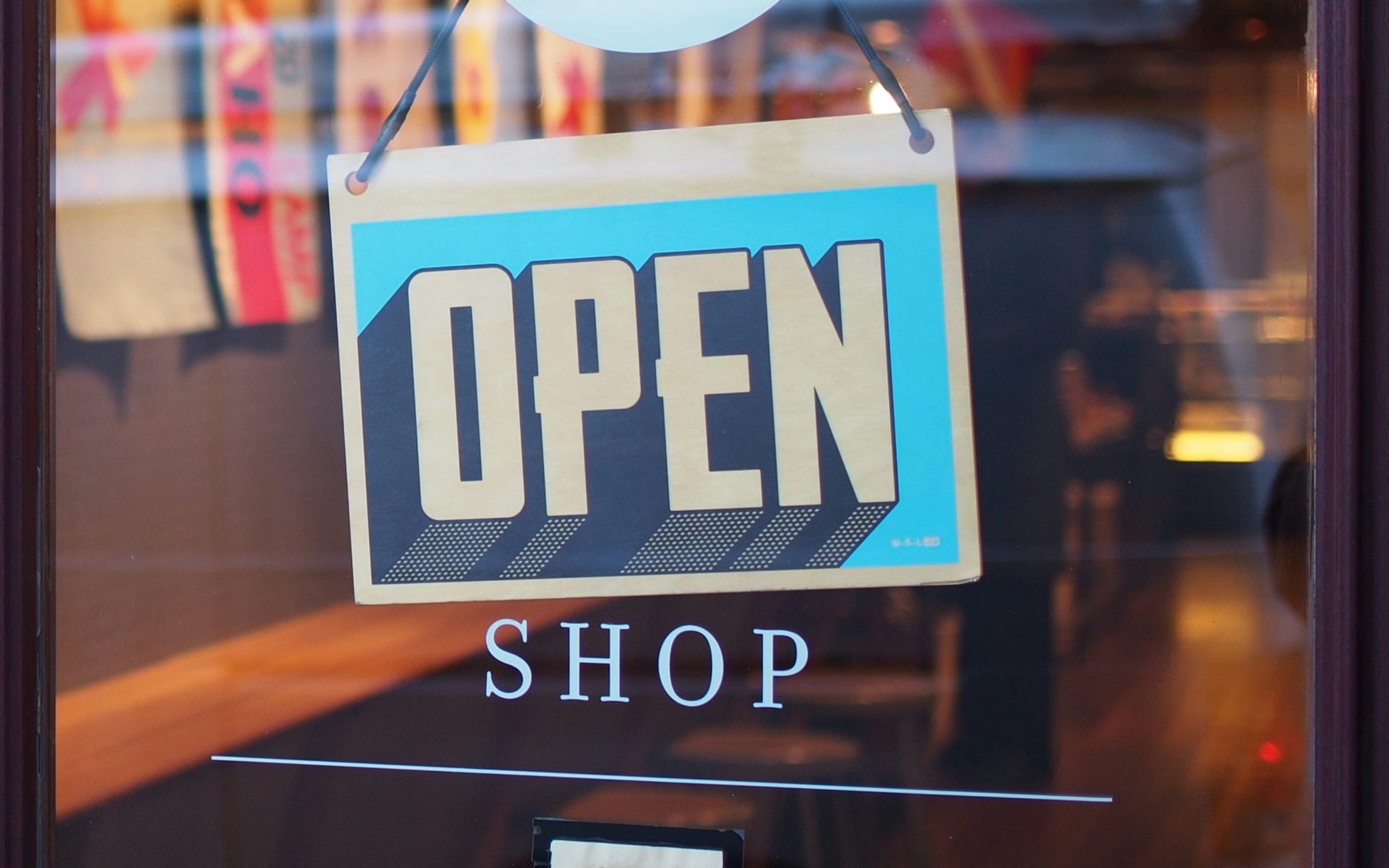Dropshipping was, for the last couple of years, the thing to do if you want to build a successful e-commerce business. I mean we’ve all seen those ads telling you how Teddy, who was broke and slept on his best friend's couch, made thousands of dollars within a week through dropshipping.
Running a dropshipping store is a valuable experience. It means that you know how to run online ads and digital marketing campaigns, how to set up a Shopify store, how to manage customer relationships, and how to deal with huge peaks of stress.
Some of you have tested it and failed, while some others have succeeded (congratulations!). Top dropshippers indicate that the success rate in the dropshipping business ranges from 10 to 20%. Only Just 10% of dropshippers achieved success in their first year!
In the latter case, it means that not only do you have the necessary skills to run an online business, but you also know your market. You have the customer base and the money to reach new heights and lead your brand to bigger stages.
In this blog post, you’ll find a step-by-step guide on how to transition from dropshipping to traditional e-commerce. Before we move further, let me explain why it is necessary to move into e-commerce to achieve growth and success for your brand.
1. Dropshipping vs e-commerce: The key differences
Despite being a cheap and lost-risk way to start an online business, dropshipping has many limits in the long term. Since you have zero control over your inventory, it is hard to ensure that your products are processed straight away or aren’t on backorder. You also lack visibility on your product quality.
Knowing that dropshipping margins are low, it is hard to make huge profits on single items. This means that you’ll need a high sales volume to make profits, but volume means more orders, more orders mean more logistics-related problems and more problems mean less time to focus on your brand’s growth.
One of the biggest cons of dropshipping is also the lack of control over the product’s quality. This leads to a difference between your customer's expectations and the product in reality, which results in an unpleasant customer experience.
This lack of control over many important factors of your business and the long shipping time negatively affect the whole experience and are the biggest limitations of dropshipping, which leads to stagnation.
When it comes to proper e-commerce, it is slightly different. Starting an e-commerce requires some investment to support the expenses related to manufacturing and storage. It also represents a greater risk since the investment is bigger. Saving some money from your dropshipping activity can be a great way to cover these expenses.
Since you have more control over every part of your business, you’ll be able to negotiate your manufacturing costs and set your selling price and thus ensure to have the right margins.
Another advantage is that you have full control over your brand and you can offer high-quality products. I mean you can manufacture your product line, you can also manage your inventory however you want and so you have full control over all your supply chain processes, from manufacturing to shipping.
This will help you offer different shipping options (No, 30-day shipping isn’t an option any more) and ensure the best experience for your customers.
Going from dropshipping to traditional e-commerce will play a major role in upgrading your customers' experience and driving growth.
Getting the most out of dropshipping and overcoming its limitations by expanding your business to e-commerce is a great solution if you want to develop a successful and widely-known brand.
To help you during your transition from dropshipping to e-commerce, you can follow this step-by-step guide:
2. Finetune and adapt your brand idendity
This is the most important part of your transition as it will affect every step you’ll take during your e-commerce journey.
Building on your dropshipping foundation, it's time to deepen your brand identity for the e-commerce transition.
Reflect on the insights gained from your initial venture.
Ask critical questions: How can your brand better serve its target audience? What unique value can you offer in the e-commerce space? Use these insights to refine your brand's vision and values.
Upgrade your website and marketing strategies to mirror this evolved identity, ensuring they resonate more effectively with your audience and set you apart in the competitive e-commerce landscape.
3. Develop a product design and source potential manufacturers
You’ll have to think about your product design and its specific components. Having previous experience in your niche thanks to your dropshipping website, should help you to understand your customer's expectations and determine which kind of product you want to develop and what are its differentiating features.
Once you have the design, you can start looking for a manufacturer. Think about where you want your products to be manufactured.
During your choice, you’ll need to consider different factors. You’ll have to understand the costs associated with each manufacturer. If this one is overseas, you’ll also need to inform yourself about importation processes and the costs related to it. You can have a look at Ovrsea or Flexport, which are freight forwarders companies that can help you with your cargo’s importation.
To get you started, you can contact your old dropshipping provider who can introduce you to potential manufacturers or maybe even manufacture your products by himself.
Don’t forget to take into consideration your brand’s positioning during your manufacturer choice and product design. For example, if you’re selling sneakers and you position yourself around sustainability and you target vegan consumers. Make sure to use raw materials and choose a manufacturer that respects your brand’s values.
3.1 The ultimate checklist for negotiating manufacturing costs
Preparation:
- Gather industry pricing data through market research.
- Analyse raw material and labour costs.
- Assess reputation and certifications.
- Verify compliance with standards.
Relationship building:
- Establish transparent channels.
- Build trust and reliability.
- Regularly engage with suppliers.
- Attend industry events.
Negotiation strategies:
- Determine optimal order volume.
- Explore discounts for larger orders.
- Encourage competitive bidding.
- Shortlist potential manufacturers.
Cost understanding:
- Break down manufacturing costs.
- Identify potential savings.
- Negotiate favourable payment terms.
- Align terms with cash flow.
Post-negotiation:
- Finalise terms and conditions.
- Specify quality standards and timelines.
- Establish ongoing cost reviews.
- Adjust strategies based on market changes.
Legal and compliance:
- Ensure contract legality.
- Address intellectual property considerations.
- Confirm supplier compliance.
- Adhere to environmental regulations.
Relationship management:
- Implement monitoring systems.
- Address issues promptly.
- Establish continuous improvement.
- Encourage mutual feedback.
4. Create a business plan and make a budget forecast
Transitioning from dropshipping to e-commerce requires higher investment and better planning, for that, you can use the business model canvas.
This will help you determine all the big aspects of your business like your cost structure and your revenue streams.
To reduce all risks, make sure to forecast all your costs and revenues. This will also allow you to have better control over your finances and to better plan your business growth. It will help you to predict your cash flow and make better strategic decisions.
5. Choose your logistics provider
The main difference between dropshipping and e-commerce is that you’ll be managing your inventory.
While it can be easy to do it during the early stages, managing e-commerce logistics becomes a real pain as soon as orders start to flow, especially when you have no previous experience with logistics.
The best option for this matter is to work with a logistics provider who can handle your inventory storage, order fulfilment, and returns. This will ease the burden on your shoulders and you will be able to focus your effort on other areas of your business. It will also help you get the best rates for storage and transportation.
Make sure to choose a logistics partner that can scale with you and support your worldwide expansion.
Choosing a provider who will help you optimize your logistics processes in the short and long run is crucial to ensure continual growth.
Working with logistics experts will help you offer the best options for your consumers. They won’t need to wait 30 days to get their products any more. This will drive better satisfaction and an upgraded customer experience.
Deciding the right logistics provider is a tricky task as there are many factors that you should take into consideration. To know more, check our article on how to choose the best logistics partner for your e-commerce.
Bigblue tips
Unlock the full potential of your e-commerce logistics with Bigblue. Benefit from our industry-specific expertise and seamless platform integration to streamline your operations. Elevate the brand-customer relationship through accurate delivery estimates, live tracking, and personalised unboxing experiences. Committed to sustainability, we align with the increasing environmental awareness among consumers.
Choose Bigblue as your logistics partner, offering expert guidance and robust solutions to foster your business growth.
6. Develop a marketing strategy to launch your e-commerce store
If you’ve successfully managed all the steps above, you’re almost done with your transition. While your products are being manufactured, don’t forget to set a marketing strategy to notify your current customer base about the changes you’re making. Keeping your customers updated will drive more engagement towards your brand.
Think about promoting your new products on social media and by email. Make sure to take advantage of the momentum you generated through your dropshipping activity by distributing coupons to your previous customers to push pre-orders.
Try to also focus your efforts on the launching day as if it were an event that no one wants to miss. This will help you to drive sales from the first minute of your e-commerce journey and introduce yourself to the market in the strongest way.
You can also engage with influencers in your niche to build trust, boost awareness around your brand and promote your product on social media. Working with influencers is also a great way to generate content about your brand without spending too much effort.
Try to encourage your customers to leave reviews, and feedback or create user-generated content for your brand. You can, for example, create a hashtag that your customers can use on social media and promote on your channels. User-generated content is usually more trusted and doesn’t cost anything.
So depending on your niche, choose the most suitable channels and push marketing as much as possible to boost pre-orders and ensure a strong introduction into the market.
7. Enhance your customer's experience and create brand advocates
Now that you have full control over every aspect of your business and you have got rid of all the dropshipping limitations, you can upgrade your customers’ experience and provide the best journey possible for them.
Once your customers notice your effort and your improvement, your relationship will get even stronger and you’ll be able to build a real engagement toward your brand.
Take advantage of this and try to build a network of brand advocates who will promote your brand and products for you.
Don’t forget to build a strong customer support team to answer and fix your customer's inquiries and ensure the best experience for them at every stage of their journey.
Dropshipping is a great way to start your online business but its limitations make it difficult to achieve sustainable growth.
However, it is a great way to gain the experience needed to run an e-commerce store and is a great first step to growing a successful brand.



.webp)








